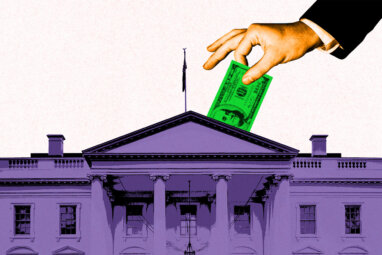What’s Your Data Worth?
Many businesses don’t yet know the answer to that question. But going forward, companies will need to develop greater expertise at valuing their data assets.
In 2016, Microsoft Corp. acquired the online professional network LinkedIn Corp. for $26.2 billion. Why did Microsoft consider LinkedIn to be so valuable? And how much of the price paid was for LinkedIn’s user data — as opposed to its other assets? Globally, LinkedIn had 433 million registered users and approximately 100 million active users per month prior to the acquisition. Simple arithmetic tells us that Microsoft paid about $260 per monthly active user.
Did Microsoft pay a reasonable price for the LinkedIn user data? Microsoft must have thought so — and LinkedIn agreed. But the deal generated scrutiny from the rating agency Moody’s Investors Service Inc., which conducted a review of Microsoft’s credit rating after the deal was announced. What can be learned from the Microsoft–LinkedIn transaction about the valuation of user data? How can we determine if Microsoft — or any acquirer — paid a reasonable price?
The answers to these questions are not clear. But the subject is growing increasingly relevant as companies collect and analyze ever more data. Indeed, the multibillion-dollar deal between Microsoft and LinkedIn is just one recent example of data valuation coming to the fore. Another example occurred during the Chapter 11 bankruptcy proceedings of Caesars Entertainment Operating Corp. Inc., a subsidiary of the casino gaming company Caesars Entertainment Corp. One area of conflict was the data in Caesars’ Total Rewards customer loyalty program; some creditors argued that the Total Rewards program data was worth $1 billion, making it, according to a Wall Street Journal article, “the most valuable asset in the bitter bankruptcy feud at Caesars Entertainment Corp.” A 2016 report by a bankruptcy court examiner on the case noted instances where sold-off Caesars properties — having lost access to the customer analytics in the Total Rewards database — suffered a decline in earnings. But the report also observed that it might be difficult to sell the Total Rewards system to incorporate it into another company’s loyalty program. Although the Total Rewards system was Caesars’ most valuable asset, its value to an outside party was an open question.
As these examples illustrate, there is no formula for placing a precise price tag on data. But in both of these cases, there were parties who believed the data to be worth hundreds of millions of dollars.
Exploring Data Valuation
To research data valuation, we conducted interviews and collected secondary data on information activities in 36 companies and nonprofit organizations in North America and Europe. Most had annual revenues greater than $1 billion. They represented a wide range of industry sectors, including retail, health care, entertainment, manufacturing, transportation, and government.
Although our focus was on data value, we found that most of the organizations in our study were focused instead on the challenges of storing, protecting, accessing, and analyzing massive amounts of data — efforts for which the information technology (IT) function is primarily responsible. While the IT functions were highly effective in storing and protecting data, they alone cannot make the key decisions that transform data into business value. Our study lens, therefore, quickly expanded to include chief financial and marketing officers and, in the case of regulatory compliance, legal officers. Because the majority of the companies in our study did not have formal data valuation practices, we adjusted our methodology to focus on significant business events triggering the need for data valuation, such as mergers and acquisitions, bankruptcy filings, or acquisitions and sales of data assets. Rather than studying data value in the abstract, we looked at events that triggered the need for such valuation and that could be compared across organizations.
We define data value as the composite of three sources of value: (1) the asset, or stock, value; (2) the activity value; and (3) the expected, or future, value.
All the companies we studied were awash in data, and the volume of their stored data was growing on average by 40% per year. We expected this explosion of data would place pressure on management to know which data was most valuable. However, the majority of companies reported they had no formal data valuation policies in place. A few identified classification efforts that included value assessments. These efforts were time-consuming and complex. For example, one large financial group had a team working on a significant data classification effort that included the categories “critical,” “important,” and “other.” Data was categorized as “other” when the value was judged to be context-specific. The team’s goal was to classify hundreds of terabytes of data; after nine months, they had worked through less than 20.
The difficulty that this particular financial group encountered is typical. Valuing data can be complex and highly context-dependent. Value may be based on multiple attributes, including usage type and frequency, content, age, author, history, reputation, creation cost, revenue potential, security requirements, and legal importance. Data value may change over time in response to new priorities, litigation, or regulations. These factors are all relevant and difficult to quantify.
A Framework for Valuing Data
How, then, should companies formalize data valuation practices? Based on our research, we define data value as the composite of three sources of value: (1) the asset, or stock, value; (2) the activity value; and (3) the expected, or future, value. Here’s a breakdown of each value source:
1. Data as Strategic Asset
For most companies, monetizing data assets means looking at the value of customer data. This is not a new concept; the idea of monetizing customer data is as old as grocery store loyalty cards. Customer data can generate monetary value directly (when the data is sold, traded, or acquired) or indirectly (when a new product or service leveraging customer data is created, but the data itself is not sold). Companies can also combine publicly available and proprietary data to create unique data sets for sale or use.
How big is the market opportunity for data monetization? In a word: big. The Strategy& unit of PwC has estimated that, in the financial sector alone, the revenue from commercializing data will grow to $300 billion per year by 2018.
2. The Value of Data in Use
Data use is typically defined by the application — such as a customer relationship management system or general ledger — and frequency of use. The frequency of use is typically defined by the application workload, the transaction rate, and the frequency of data access.
The frequency of data usage brings up an interesting aspect of data value. Conventional, tangible assets generally exhibit decreasing returns to use. That is, they decrease in value the more they are used. But data has the potential — not always, but often — to increase in value the more it is used. That is, data viewed as an asset can exhibit increasing returns to use. For example, Google Inc.’s Waze navigation and traffic application integrates real-time crowdsourced data from drivers, so the Waze mapping data becomes more valuable as more people use it.
The major costs of data are in its capture, storage, and maintenance. The marginal costs of using it can be almost negligible. An additional factor is time of use: The right data at the right time — for example, transaction data collected during the Christmas retail sales season — may be of very high value.
Of course, usage-based definitions of value are two-sided; the value attached to each side of the activity is unlikely to be the same. For example, for a traveler lost in an unfamiliar city, mapping data sent to the traveler’s cellphone may be of very high value for one use, but the traveler may never need that exact data again. On the other hand, the data provider may keep the data for other purposes — and use it over and over again — for a very long time.
3. The Expected Future Value of Data
Although the phrases “digital assets” or “data assets” are commonly used, there is no generally accepted definition of how these assets should be counted on balance sheets. In fact, if data assets are tracked and accounted for at all — a big “if” — they are typically commingled with other intangible assets, such as trademarks, patents, copyrights, and goodwill. There are a number of approaches to valuing intangible assets. For example, intangible assets can be valued on the basis of observable market-based transactions involving similar assets; on the income they produce or cash flow they generate through savings; or on the cost incurred to develop or replace them.
Making implicit data policies explicit, codified, and sharable across the company is a first step in prioritizing data value.
What Can Companies Do?
No matter which path a company chooses to embed data valuation into company-wide strategies, our research uncovered three practical steps that all companies can take.
1. Make valuation policies explicit and sharable across the company. It is critical to develop company-wide policies in this area. For example, is your company creating a data catalog so that all data assets are known? Are you tracking the usage of data assets, much like a company tracks the mileage on the cars or trucks it owns? Making implicit data policies explicit, codified, and sharable across the company is a first step in prioritizing data value.
A few companies in our sample were beginning to manually classify selected data sets by value. In one case, the triggering event was an internal security audit to assess data risk. In another, the triggering event was a desire to assess where in the organization the volume of data was growing rapidly and to examine closely the costs and value of that growth.
The strongest business case we found for data valuation was in the acquisition, sale, or divestiture of business units with significant data assets. We anticipate that in the future, some of the evolving responsibilities of chief data officers may include valuing company data for these purposes. But that role is too new for us to discern any aggregate trends at this time.
2. Build in-house data valuation expertise. Our study found that several companies were exploring ways to monetize data assets for sale or licensing to third parties. However, having data to sell is not the same thing as knowing how to sell it. Several of the companies relied on outside experts, rather than in-house expertise, to value their data. We anticipate this will change. Companies seeking to monetize their data assets will first need to address how to acquire and develop valuation expertise in their own organizations.
3. Decide whether top-down or bottom-up valuation processes are the most effective within the company. In the top-down approach to valuing data, companies identify their critical applications and assign a value to the data used in those applications, whether they are a mainframe transaction system, a customer relationship management system, or a product development system. Key steps include defining the main system linkages — that is, the systems that feed other systems — associating the data accessed by all linked systems, and measuring the data activity within the linked systems. This approach has the benefit of prioritizing where internal partnerships between IT and business units need to be built, if they are not already in place.
A second approach is to define data value heuristically — in effect, working up from a map of data usage across the core data sets in the company. Key steps in this approach include assessing data flows and linkages across data and applications, and producing a detailed analysis of data usage patterns. Companies may already have much of the required information in data storage devices and distributed systems.
Whichever approach is taken, the first step is to identify the business and technology events that trigger the business’s need for valuation. A needs-based approach will help senior management prioritize and drive valuation strategies, moving the company forward in monetizing the current and future value of its digital assets.





